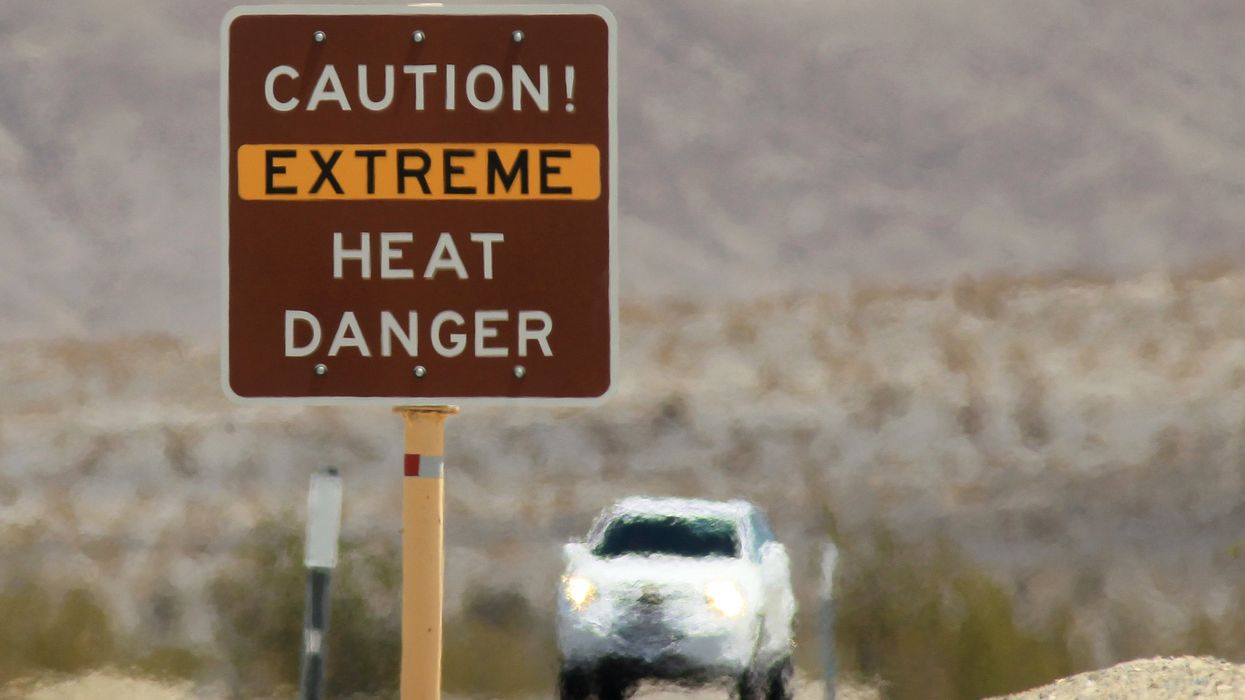
Death Valley is one of the hottest places on Earth
Records could be shattered in parts of the US this week as an intense heatwave sweeps across numerous states - with some places already topping 50C (122F).
At midnight in Death Valley last night, one of the hottest places on Earth, temperatures were still at 105F. It peaked at 51.2C (124.1F) earlier in the day on Tuesday.
Last year the hottest temperature on Earth was recorded there: 54C (130F). If trends like this continue, the record could be toppled again this year.
While Death Valley often records the highest temperatures on Earth, there may be hotter places such as parts of the Sahara, but they are too remote for reliable monitoring.
Some places in the US are already seeing records being met, and could see them exceeded soon. Salt Lake City in Utah saw a high of 41.7C (107F) on Tuesday, tying the all-time record.
Weather maps of the US showed the nation bathed in red, showing just how widespread the blistering temperatures currently are:
Extreme and extensive heatwave really kicking off in the USA now. 41.7°C (107°F) in Salt Lake City, this ties its… https://t.co/S2BQlkvChg— Scott Duncan (@Scott Duncan) 1623819721
It’s not just super-remote Death Valley feeling the heat, the city of sin - Las Vegas - will swelter in 46C (115F) temperatures today - which is likely too hot even for its daytime pool-partiers.
The National Weather Service issued a warning amid record-breaking heatwaves, saying: “Dangerous heat will affect much of the western US for much of this week with temperatures up to 120 degrees. These temperatures make any outdoor activities dangerous, so stay cool and hydrated.”
We would typically expect this kind of hot weather in July or August, so why’s this hitting so early this year? Well, it’s driven by a pattern in the jet stream which is exacerbated by drought conditions on the ground.
The jet stream is a narrow band of high altitude, with high-powered winds that travel up to eight miles into the atmosphere. Essentially, the wind separates cool northern air from warm southern air.
As a result, when the jet stream curves upward over an area such as the Western US, it makes warmer air come up with it, causing a dome of hot dry air to be pushed over the West.
The weather effects are made worse by drought conditions in many of the states affected. Because the soil isn’t getting as much moisture, it becomes parched. When the ground is dry, the heat of the sun evaporates all the moisture from the ground, which heats the surface.
This graph helps explain why heat extremes are becoming so much more common/severe in a warming world.… https://t.co/CqIWhH5hNJ— Andrew Freedman (@Andrew Freedman) 1623769366
Naturally, the demand for air conditioning will be high. In Texas, the Electric Reliability Council of Texas urged residents to conserve energy electricity use related to power outages.
Heatwaves are one of the clearest indicators that a warming climate impacts the weather. And although heatwaves are expected (as well as cold spells), hotter temperatures make regular heat waves extreme.
Check out some of the high temperatures recorded across the US below:
- Salt Lake City, Utah — 107°F/ 41.6°C
- Las Vegas, Nevada— 115 °F/ 46.1°C
- Death Valley —126°F/ 52.2°C
- Needles, California—118 °F/ 47.7°C
- Barstow, California —115°F/ 46.1°C
- Bishop, California—107°F/41.6°C
- Desert Rock, Arizona—109°F/42.7°C
- Lake Havasu City, Arizona —119°F/48.3°C
- Kingman, Arizona—109°F/42.7°C
People enduring the record heat shared a bunch of fun memes and reaction on Twitter:
How California feels right now @warcraft #warcraft #HEATWAVE https://t.co/Gam4l27DOA— Touchpadwarrior (@Touchpadwarrior) 1623790565
How I feel right now during this #heatwave https://t.co/jd3SidONgg— alex (@alex) 1623794004
Random thoughts about the current #heatwave 😭😭😭 https://t.co/bIiaS8kc1W— Danielle Pinnock (@Danielle Pinnock) 1623801904
The key health advice amid all of this hot weather? Wear sunscreen, stay hydrated, limit time outside, monitor high-risk loved ones, watch for signs of illness - and don’t leave dogs, children, or people - for that matter - inside hot cars.













